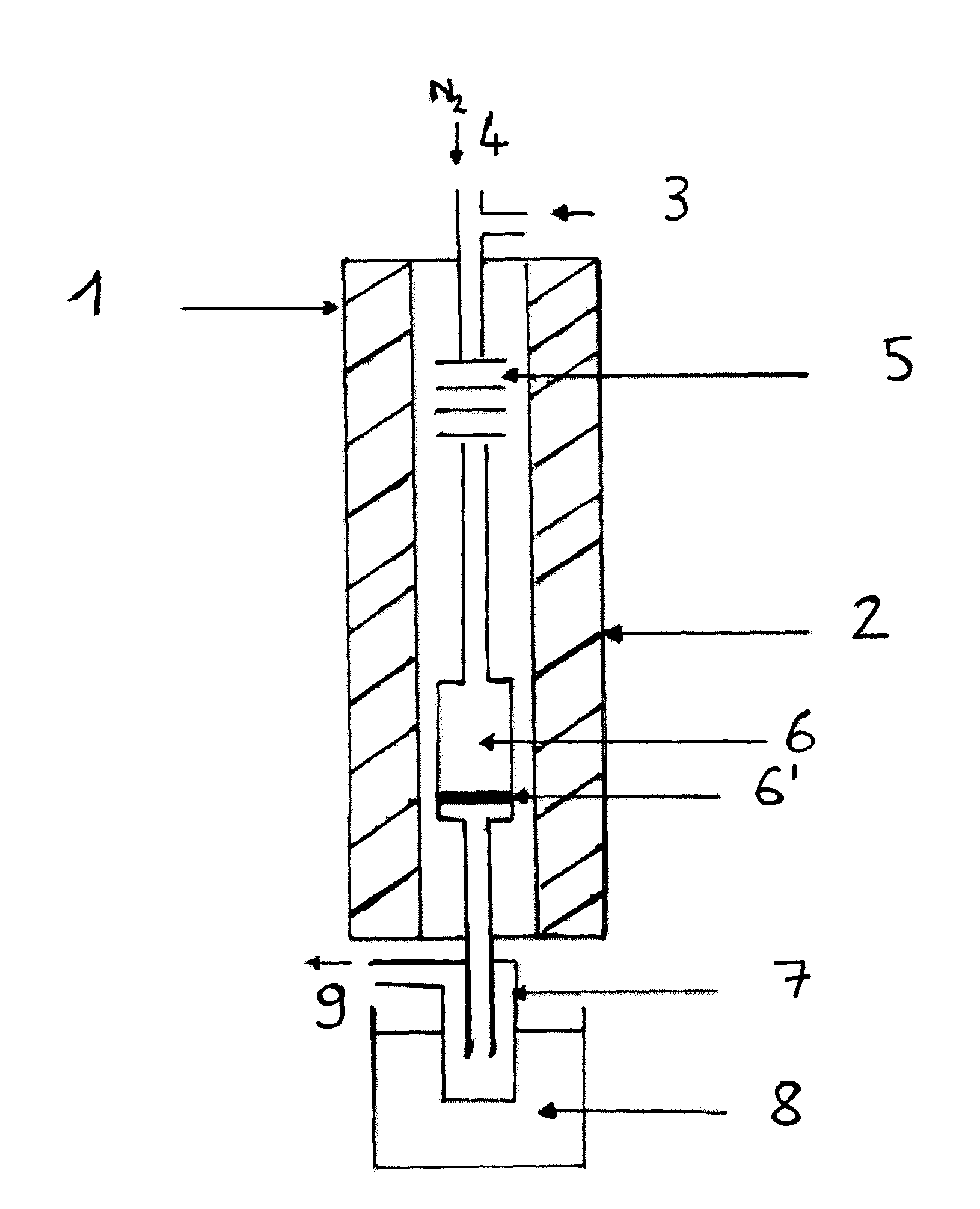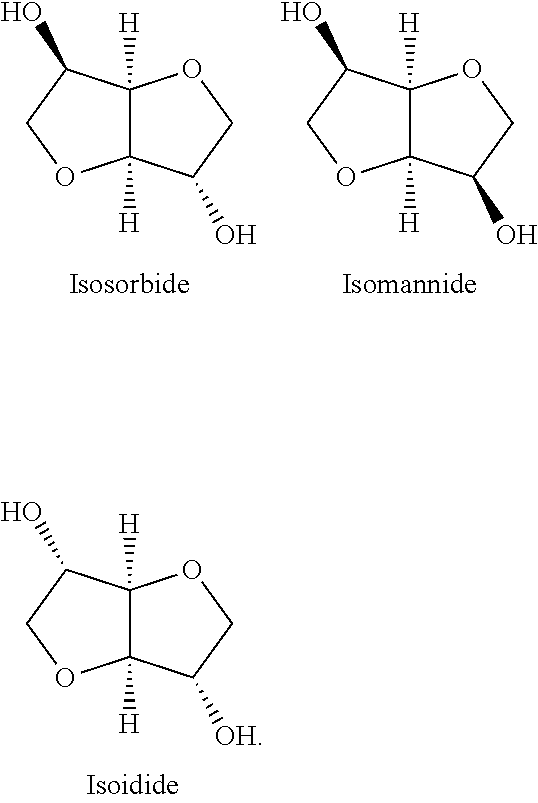Method for preparing dialkyloxydianhyrohexitol by etherification of dianhydrohexitol using a light alcohol, in the presence of an acidic catalyst
a technology of dianhydrohexitol and light alcohol, which is applied in the field of preparation of ether derivatives, can solve the problems of forming considerable quantities of salts, adversely affecting the economics of the process, and prior art not meeting this need
- Summary
- Abstract
- Description
- Claims
- Application Information
AI Technical Summary
Benefits of technology
Problems solved by technology
Method used
Image
Examples
embodiment
Preferred Embodiment
Gas Phase
[0049]In this preferred embodiment, the etherification is at least partly effected in the gas phase.
[0050]Performing the reaction in the gas phase enables in particular the obtention of colorless reaction products.
[0051]Catalyst
[0052]The catalyst is preferably selected from the group comprising and, better still, consisting of:[0053]1. salts of heteropolyacids or polyoxometallates of general formula:
HkXjMmOn.yH2O (I)[0054]wherein,[0055]X represents a heteroatom selected from the group consisting of the following elements: P, Si, Ge, B and As,[0056]M represents a peripheral metallic element selected from the group consisting of W, Mo and V,[0057]j is the number of heteroatoms and represents 1 or 2,[0058]k is the number of hydrogen atoms and is between 0.5 and 10,[0059]m is the number of peripheral metal atoms W, Mo and V and is between 1 and 18,[0060]n is the number of oxygen atoms and is between 2 and 62,[0061]y is the number of molecules of water of hy...
example 1
O-Methylation of Isosorbide by Methanol in the Presence of an Acidic Potassium Salt of 12-Tungsto-Phosphoric Acid: K2HPW12O40 in Batch Reactor, Liquid Phase
[0121]The following quantities are introduced into the autoclave: catalyst=2 g, isosorbide=36 g, MeOH / isosorbide mole ratio=5. The catalyst is the acidic cesium salt of 12-tungstophosphoric acid: K2HPW12O40.
[0122]At the start of the reaction, the atmosphere in the autoclave consists of 20 bar of Ar.
[0123]The reaction mixture is raised to two different temperatures: 180° C. or 200° C. The reaction time is 6 hrs.
[0124]At the end of the reaction, the reaction medium is cooled by means of an ice bath.
[0125]The liquid reaction products are separated from the reaction medium and analyzed by gas chromatography. The isosorbide conversion and selectivity are calculated in mole % (standardization to 100 mole % of the conversions and selectivity for the isosorbide derivatives).
[0126]The results are shown in table 1.
[0127]
TABLE 1Conversion a...
example 2
O-Methylation of Isosorbide by Methanol Catalyzed by an Acid Potassium Salt of 12-Tungstophosphoric acid: K2HPW12O40 in Continuous Reactor, in Gas Phase
[0131]The reaction is performed in the apparatus of FIG. 1.
[0132]The following experimental protocol was adopted:[0133]sampling of the condensate at the end of one hour (1 hr) and four hours (4 hrs) of reaction,[0134]cessation of pumping of the reaction mixture at the end of four hours of reaction.
[0135]The experimental conditions were as follows:
[0136]Catalyst: K2HPW12O40, mcata=2 g[0137]Dliq=0.06 ml·min−1 [0138]DN2=8 ml·min−1 [0139]Pmethanol=600 torr[0140]Pisosorbide=28 torr[0141]Tvaporization=225° C.[0142]Treaction=225° C.[0143]Methanol / isosorbide mole ratio=20[0144]ppHiso (hr−1)=isosorbide mass flow (g·hr−1) / mass of catalyst (g)=0.26 hr−1.
[0145]The results obtained are shown in table 2.
[0146]
TABLE 2O-methylation of isosorbide with methanol catalyzed byK2HPW12O40 in continuous reactor, in gas phase.K2HPW12O40Sampling (hrs of react...
PUM
| Property | Measurement | Unit |
|---|---|---|
| mole ratio | aaaaa | aaaaa |
| temperatures | aaaaa | aaaaa |
| temperatures | aaaaa | aaaaa |
Abstract
Description
Claims
Application Information
 Login to View More
Login to View More - R&D
- Intellectual Property
- Life Sciences
- Materials
- Tech Scout
- Unparalleled Data Quality
- Higher Quality Content
- 60% Fewer Hallucinations
Browse by: Latest US Patents, China's latest patents, Technical Efficacy Thesaurus, Application Domain, Technology Topic, Popular Technical Reports.
© 2025 PatSnap. All rights reserved.Legal|Privacy policy|Modern Slavery Act Transparency Statement|Sitemap|About US| Contact US: help@patsnap.com



